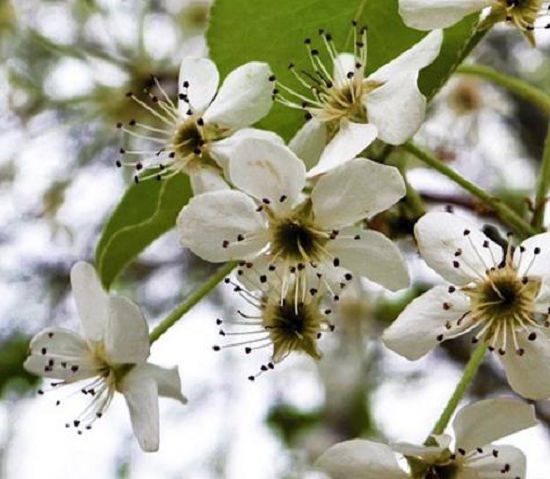What is the situation that the orchids planted by ourselves are not fragrant when they are in bloom?
When it comes to orchids, the first thing many flower friends think of is fragrance, delicate fragrance! But why are the orchids raised by some flower friends not fragrant? Or is it fragrant to blossom in the mountain, but not fragrant if you keep it in a flowerpot? Or the same breed, others raise very fragrant, you raise not fragrant? There are many factors that affect the fragrance of orchids. If your orchids are not fragrant, they are likely to be related to the following factors.
Variety problem
In fact, most orchids are unscented, including orchids, some varieties are not fragrant, it is not a question of whether they can be raised or not, and genes determine everything. Some of the orchids we see every day have no fragrance at all, some have a faint fragrance, some have a strong incense, and some have a long aftertaste. For example, some varieties of Cymbidium and Cymbidium have a good smell and can spread far away. The orchid on TV is so fragrant that you can smell it from afar is an exaggeration. Don't be fooled. If you want to raise fragrant orchids, you should raise the right varieties, do your homework beforehand, and know which kind of fragrance is not fragrant and which is not fragrant. Some flower sellers say that this incense and that incense may just trick you into buying it so that you can only rely on doing enough homework.
Sunshine length
The fragrance released by orchids has a lot to do with the length and intensity of sunshine. From the beginning of flower bud differentiation, orchids should appropriately increase light, especially after budding, sufficient light can promote flower bud development, which is of great benefit to flowering quality and flower fragrance. If the light is not enough and the flowering quality is low, the fragrance will fade or cannot be smelled at all. Different varieties of orchids have different requirements for light intensity. For example, orchids should be properly shaded even in winter. On the other hand, some varieties of orchids can accept full sunlight in winter, but shading will not grow well. Therefore, the sunshine length and intensity of orchids should be adjusted according to the variety itself.
Temperature change
The flowering quality of orchids is also related to temperature change and temperature difference. For example, Cymbidium and Cymbidium can blossom normally only after vernalization in a low temperature environment. If you do not experience low temperature vernalization, either the bud will dry up and cannot bloom, or the quality of flowering will be poor. Some orchids need a lower temperature to bloom, and some orchids need higher temperatures when they bloom. In any case, most orchids require a certain temperature difference sooner or later during budding and flowering. The temperature difference is reasonable, the flowering quality is high, the flower fragrance will be a little thicker accordingly. Indoor orchid temperature and temperature difference is not easy to grasp, so many orchids are easy to blossom in open-air maintenance, strong fragrance, indoor maintenance is not easy to blossom, flowering is not fragrant.
Is there enough fertilizer?
The flowering quality and fragrance of orchids are also related to whether the nutrients are sufficient, the bud develops well, and the fragrance is a little stronger. The nutrient is insufficient, the bud development is not complete, the flowering quality is low, the fragrance is a little lighter. Therefore, in the orchid bud growth period, it is necessary to apply thin fertilizer frequently and apply more phosphorus and potassium fertilizer to promote the development and growth of flower buds. Some flower friends' orchids do not pay attention to fertilization, even if they can give birth to flowers, but also do not bloom, thin and short florescence, low ornamental.
Except for the above four points, the lack of fragrance or fragrance of orchids is also related to the growing environment. Some orchids, for example, have a strong fragrance in their place of origin, but after being planted in other places, their fragrance is always not as good as that of their place of origin, mainly due to changes in the environment. Orchids like the environment with high air quality, and the fragrance raised indoors is sometimes not as good as that raised outdoors. Therefore, there are many reasons for the unfragrant orchid blossom. to ensure that it is a fragrant variety without fragrance, efforts need to be made from maintenance.
- Prev

How to maintain and manage white orchid pot planting in winter
How to maintain and manage white orchid pot planting in winter
- Next

The bracts of Cymbidium and Cymbidium can be vernalized by a few centimeters in length.
The bracts of Cymbidium and Cymbidium can be vernalized by a few centimeters in length.
Related
- Is the orchid suitable for indoor use? Is it good for the body?
- How to prevent the empty root of orchids?
- What to do after the crab claw orchid is withered?
- Why are the leaves of orchids always yellow? Fertilizing and watering.
- Can the root of the gentleman orchid be saved if it is rotten?
- Diagnosis and treatment of cotton-blowing beetle insects in Cymbidium
- There is a way for a gentleman's orchid to rot.
- What is the most suitable temperature and humidity for the orchid?
- How to raise a gentleman's orchid? Cultivation techniques of Cymbidium
- How to prepare the nutritive soil for the cultivation of Cymbidium

